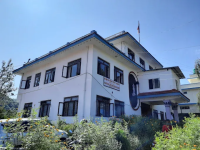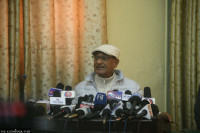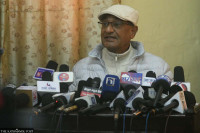National
While the entire country takes a four-day holiday, Nepal’s courts go on a two-week break
The decision to take a 15-day holiday is especially concerning given that thousands of cases remain pending at the courts.
Tika R Pradhan
Dashain holidays officially begin on October 6 and end on October 9, but Nepal’s judiciary is taking a 15-day break, having already shut down until October 13.
The Supreme Court traditionally declares a 15-day holiday, but the times have changed, say many. The judiciary should reconsider its holidays for three particular reasons—the government’s decisions regarding holidays should also apply to the courts; as constitutional provisions define Nepal as a secular country, a two-week break for a Hindu holiday isn’t justified; and most importantly, there are already thousands of cases pending at the courts.
A Standing Committee member of the ruling Nepal Communist Party (NCP), who is well-versed in legal matters, said that the judiciary should follow the Cabinet’s decision regarding holidays.
“I don’t know why the courts are defiant,” the leader told the Post, asking for anonymity because he was afraid of inviting controversy.
Though observed by most Nepalis, Dashain is a Hindu festival. While Hindus perform pujas for 15 days, the number of holidays for the festival has gradually been reduced over the years. The government slashed the number of Dashain holidays from 10 to four after the country adopted secularism through the Interim Constitution in 2007. But the courts have not followed suit.
A number of political and indigenous leaders say that declaring a holiday for 15 days contradicts constitutional provisions, as the decision appears to promote a single religion.
“Nepal’s constitution has accepted secularism, in principle, which means the country has accepted all religions as equal. It’s the Supreme Court that interprets the constitution, but it itself seems to be violating the constitution,” said Govinda Chhantyal, vice-chairman of the Nepal Federation of Indigenous Nationalities, the umbrella organisation of all the indigenous nationalities of the country. “Such decisions can send a message that the judiciary is against secularism and political changes.”
Others say that given the massive number of pending cases, shutting down the judiciary for two weeks just does not make sense.
“The decision is not only discriminatory; it is also wrong in several other ways. It is a waste of time and resources,” said Om Gurung, spokesperson for the Adivasi Janajati Rastriya Andolan, a group that campaigns for the rights of indigenous nationalities.
In March, Nripa Dhoj Niraula, chief registrar at the Supreme Court, had told reporters that the Supreme Court was planning to reduce the number of pending five-year-old cases to zero within a year.
According to Devendra Dhakal, an information officer at the Supreme Court, as of Tuesday, there were 23,250 pending cases and that number is on the rise.
Pending court cases have always been a cause for concern, and many say it will be impossible for the Supreme Court to achieve its target if it continues to go on holiday for 15 days every year.
Balram KC, a former Supreme Court justice, said that given the rising number of backlogged cases, the judiciary should decide to remain open.
“For a citizen of Jumla, finalising their case is more important than celebrating Dashain,” said KC. “This tradition must change for good.”
But the judiciary seems to be in no mood to take a shorter break. Supreme Court Registrar Lal Bahadur Kunwar said that the judiciary has always observed a 15-day break and things were not going to change anytime soon.
“The decision was taken by the full court long ago and now it has become a tradition,” Kunwar told the Post.
Law Minister Bhanubhakta Dhakal too said that the Supreme Court is simply following its long-standing tradition.
“They decided to go for a 15-day holiday. Technically, the judiciary should abide by the Cabinet decision, at least on issues like holidays,” said Dhakal.




 16.12°C Kathmandu
16.12°C Kathmandu













%20(1).jpg&w=300&height=200)

